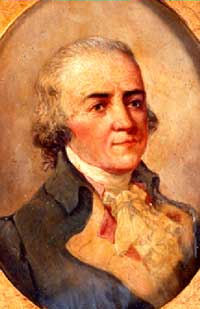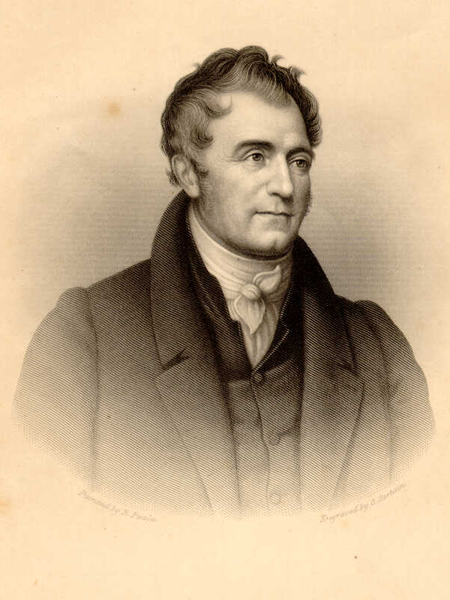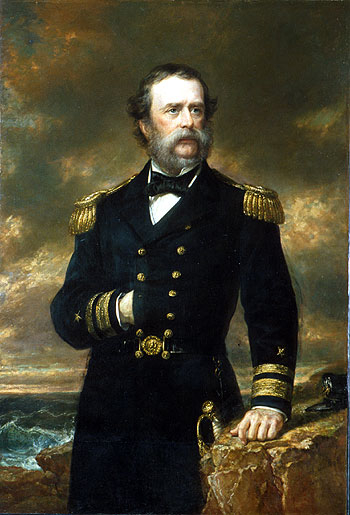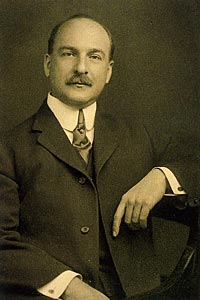
Pierre Samuel du Pont de Nemours (1739-1817). Ennobled by Louis XVI in 1784, Pierre Samuel fled France's Revolutionary Terror in 1800, with his two sons, Victor and Eleuthère. They settled in America.
Many of the old families protected their patrimonies from disintegration through a system of trusts whereby the family’s wealth was preserved intact and administered to benefit the family members. Such trusts, first used by the traditional elite of Boston in the 1820s, were fully developed by the 1880s. They became an important instrument for providing the financial security of many families of the traditional upper class amid the transformations of the industrial era. They still endure, permitting generation after generation to maintain the family’s cohesion and economic status and, consequently, its traditions.

Eleuthère Irénée du Pont (1771-1834). A chemist and industrialist, Eleuthère founded the gunpowder manufacturer, E.I. du Pont de Nemours and Company, becoming the patriarch of one of America's wealthiest families in the 19th and 20th centuries.
“The family, organized bureaucratically by trusts, was now subordinated as a social unit to the institutions that it created and that assumed its functions. Trusts and fiduciaries preserved organized families, but moved them as units to the sidelines of activity, while freeing their personnel to take up professions and to occupy leadership positions in the new complex of cultural and business institutions.”(1)
To some degree, the prevalence of the family trust invalidated the notion that the great fortunes of the country are in the hands of individuals.(2)

Samuel Francis Du Pont (1803–1865). An American naval officer who achieved the rank of Rear Admiral, he was superintendent of the United States Naval Academy, and made significant contributions to the modernization of the U.S. Navy.
The philanthropic foundation, unlimited in its duration and enjoying tax exemption, also provided a framework for many modalities of public service and for the “moral legitimization” of the family dynasties. Says Marcus: “The philanthropic foundation, which supported the professions and education, became the organizational niche in which the perpetuation of particular families could be realized.”(3)

Pierre Samuel du Pont (1870-1954). Pierre divided the bulk of the family fortune among eight siblings before his death in 1954. His branch built Wilmington Trust; dissident branches, Delaware Trust.
With its patrimonies safeguarded in family trusts and administered by professionals, this upper class came to enjoy an undeniable continuity.(4) This continuity, a fruit of the efficacy of its institutions, afforded this class increasing influence and prestige in a world marked by democratic egalitarianism.(5) [G. William] Domhoff, referring to the more recent phases of the evolution of American upper classes, observes that “‘the rich’ in the United States are not a handful of discontented eccentrics, jet setters, and jaded scions who have been pushed aside by the rise of corporations and governmental bureaucracies. They are instead full-fledged members of a thriving social class which is as alive and well as it has ever been.”(6)
(1) George F. Marcus, Elites: Ethnographic Issues (Albuquerque: School of American Research, Univ. of New Mexico Press, 1983), pp. 42-43.
(2) Cf. Michael Patrick Allen, The Founding Fortunes (New York: E. P. Dutton; Truman Talley Books, 1987), p. 103.
(3) Marcus, Elites: Ethnographic Issues, p. 239.
(4) This is not to say that there have not been many cases of philanthropic foundations slipping form the control of the founders’ descendants and engaging in activities far from the founders’ intentions.
(5) The popularity of local and regional dynasties was illustrated in the cover article “The Rich in America” (Paul Glastris, U.S. News and World Report, November 18, 1991): “Yet while tycoons of distant Wall Street might be reviled, the dynasties of provincial cities tend to inspire awe, respect—even affection. The Danielses of Raleigh, the Haases of San Francisco and the Lykes of Tampa may not be as ‘colorful’ as the Bushes. Nor are they household names across the country. But in their hometowns they are celebrities with unparalleled local power.”
(6) G. William Domhoff, The Powers That Be (New York: Random House, 1978), p. 4.
Plinio Corrêa de Oliveira, Nobility and Analogous Traditional Elites in the Allocutions of Pius XII: A Theme Illuminating American Social History (York, Penn.: The American Society for the Defense of Tradition, Family, and Property, 1993), Appendix I, pp. 312-313.











